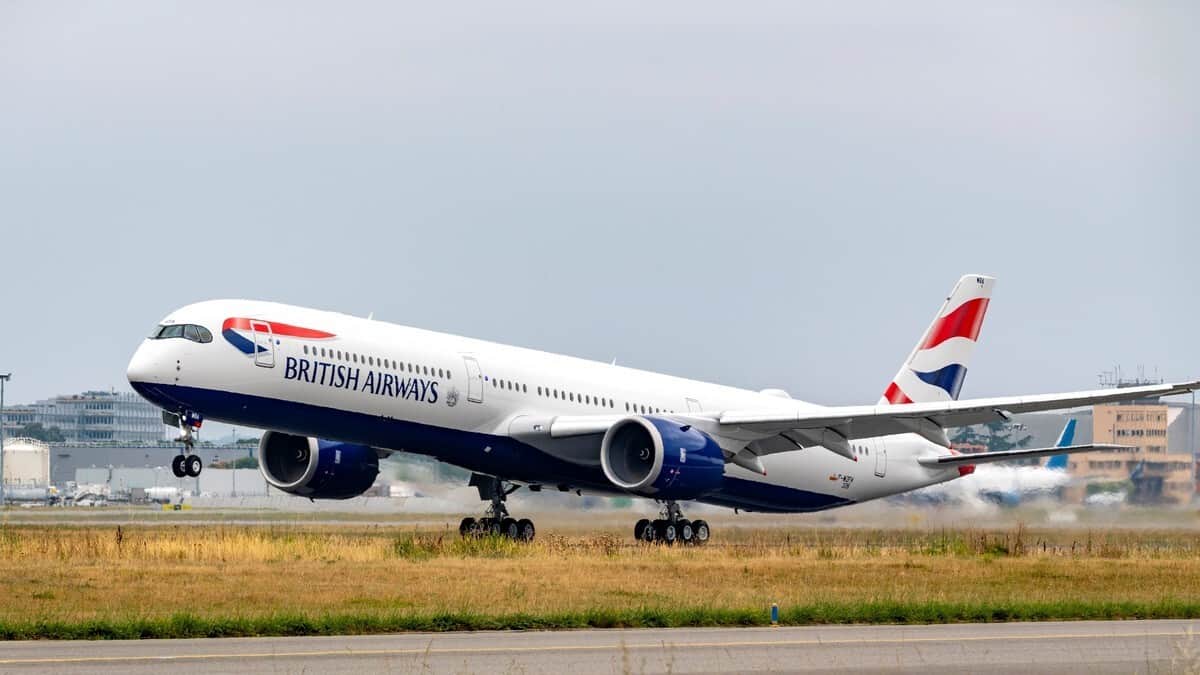As the markets closed yesterday, the International Airlines Group (LSE: IAG) share price had fallen more than 8%, although it has recovered 3% in Wednesday trading. Like many other airline stocks, the market crash of 2020 sent the IAG share price tumbling to historic lows. However, prices had been climbing encouragingly since November 2020 as air travel began picking up. At almost 199p as I write, they’re up from the 156p of a year ago. But what caused Tuesday’s interruption to that growth trajectory?
Competitors’ results
Industry giant United Airlines announced its 2021 Q1 results on Monday. These were unsatisfactory to say the least, with a net loss of $1.4bn. Operating revenue was also down by 66% compared to 2019, falling to $3.2bn. CEO Scott Kirby explained the pandemic had decreased demand by 80% for United Airlines, which was the primary source of its losses.
This disappointing report seems to have impacted the recent rally of airline share prices, highlighting the profitability problems most firms are still dealing with. Delta Airlines also fell 5% and American Airlines tanked 7% in reaction to the news.
IAG had already shared some disappointing news in late February in its Q4 results. Total revenue was down 69% while gross debt rose from €14.3bn to €15.7bn year-on-year. In addition to this, the total number of passengers carried was down 84%, which highlights the pandemic’s inescapable impact. This was felt most heavily through IAG’s Aer Lingus airline. But it wasn’t all bad news.
A more positive future outlook for the IAG share price?
Due to a massive reduction in flight numbers, IAG was able to trim a healthy 44% of operating costs. This has helped the firm build a stronger liquidity position than before the pandemic. This is great for it going forward as due to debts increasing, it’s essential to be able to counteract these with a stable cash flow position.
The firm also highlighted the positive response to the UK government’s roadmap for exiting pandemic restrictions. IAG’s British Airways saw bookings flourish in the immediate aftermath of the news. The firm won’t operate at full capacity any time in the near future, but the travel sector is likely to boom in the next year and beyond. People have been stuck in their homes and want to travel freely again. This is likely to benefit the IAG share price for years to come.
The IAG price-to-sales (P/S) ratio is 0.98. For comparison, competitors Delta Airlines and Southwest Airlines have P/S ratios of 2.2 and 3.91 respectively. A lower P/S ratio tends to indicate that a stock may be undervalued in comparison to its competitors. This metric points me towards buying the stock at the current share price.
My Verdict
It’s clear the airline industry has faced some turbulence. I believe the United Airlines results scared airline investors into dumping some of their shares in the wider sector. The results also highlighted that firms are still struggling and will continue to struggle with the impacts of the pandemic, even though normality may seem close. However, I would use this opportunity to grab some cheap shares for my portfolio, as I’m bullish about the travel industry’s long-term future.
